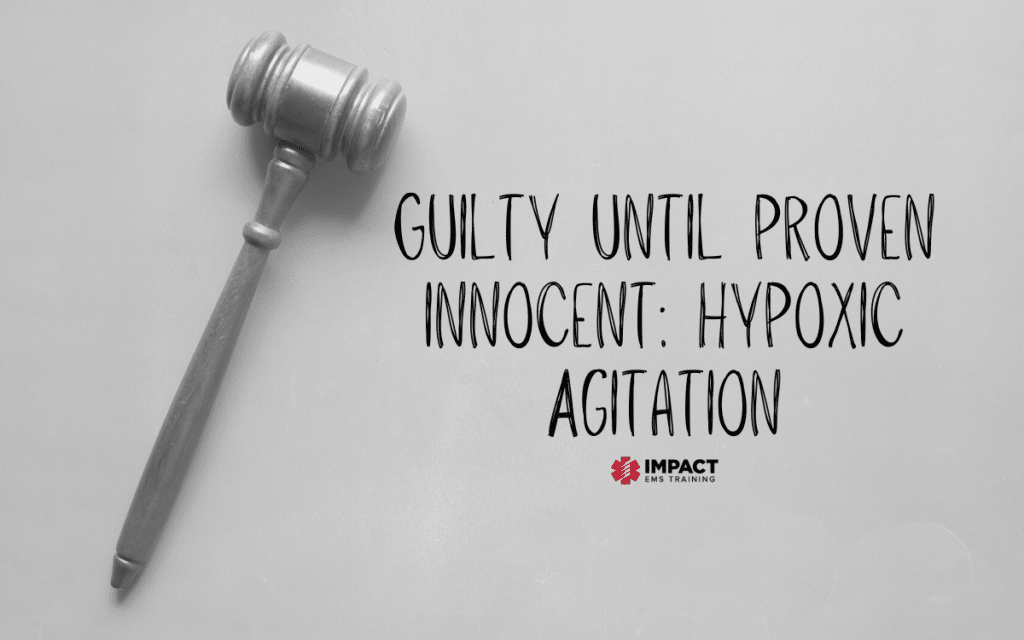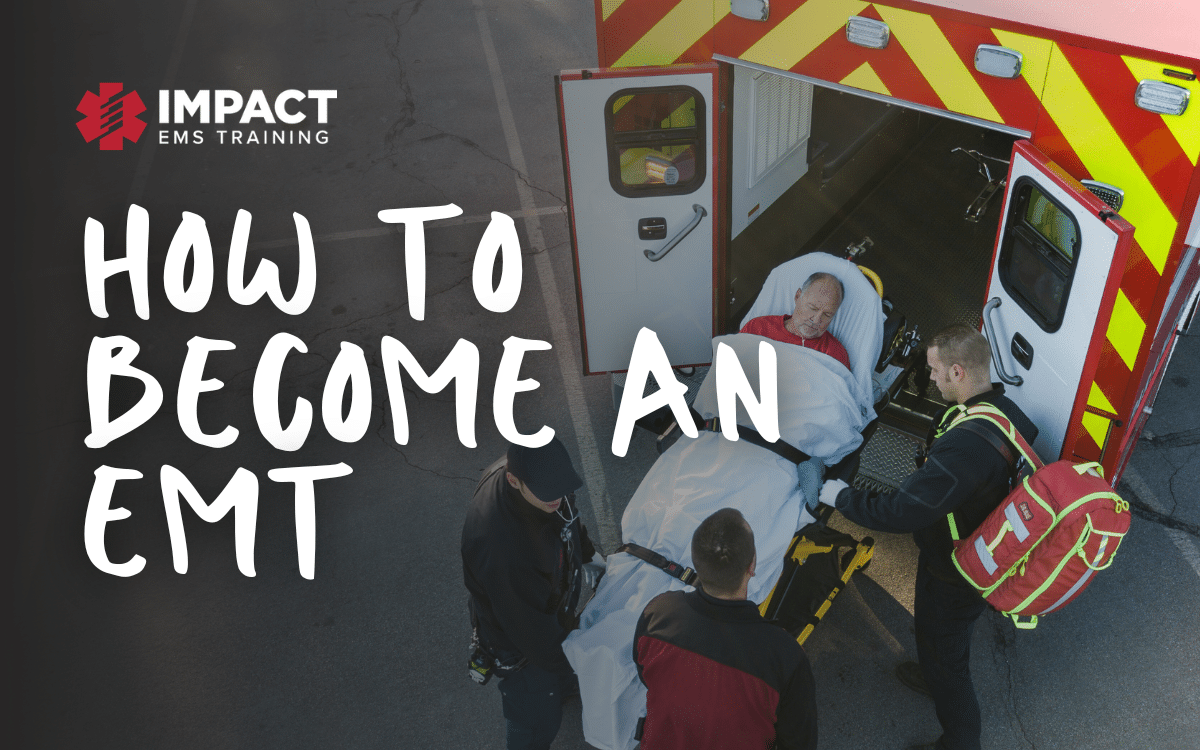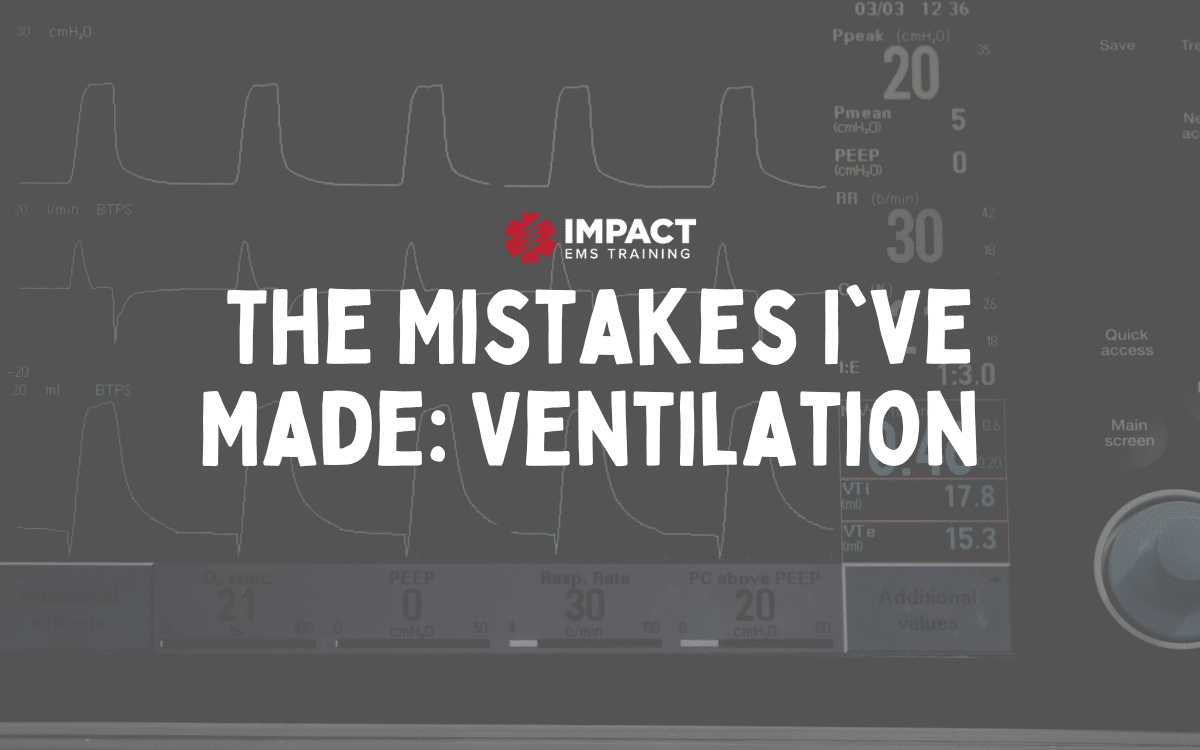“We’ve got a 62-year-old female who called 911 for herself tonight for shortness of air, but she’s got a history of anxiety, I’m pretty sure it’s just a panic attack. She’s flailing around and keeps pulling off the non-rebreather I put on her. Vitals are stable, we’ll be there in five.”
Upon arrival to the ED, the patient was hypotensive, hypoxic, altered, and febrile. Staff immediately placed her on BiPAP, got IV access, administered a fluid bolus, started antibiotics, and she was eventually transferred to the ICU for management of pneumonia, sepsis, and COPD exacerbation.
This patient was SICK. What she needed was an attentive set of eyes from her first contact with the healthcare system. Instead, her physical symptoms were dismissed because her agitation was chalked up to anxiety rather than hypoxia. Thank goodness she remained pseudostable long enough to get her to the hospital where she could receive an objective assessment and quick interventions.
AGITATION IS HYPOXIA UNTIL PROVEN OTHERWISE.
Always function off the assumption that a patient’s abnormal behavior is organic; work from the premise that they are sick and not just “crazy.” Early signs of hypoxia include restlessness, anxiety, and confusion(1).
Start with a thorough focused assessment. Find out the ins and outs of the pathology your patient is experiencing and go further to establish what is their norm and what is a deviation.
Next, initiate the treatments that will help your patient while staying within your scope and protocols. Place the patient on supplementary oxygen. Sit them up into a position that allows their native compensatory mechanisms to function.
Will there be times when you might initiate treatments on the assumption that your patient is sick and it turns out to be anxiety? Probably. Will you intervene for 100% of your patients and not allow anyone to fall through the cracks with this method? ABSOLUTELY.
I use this same approach with intoxicated patients. If you work in a busy urban setting, you likely see a high volume of patients who are heavy alcohol users. It’s easy to file them under “daily drunk” or “frequent flyer” titles and only do the bare minimum required: check the glucose, put them on a pulse ox, and let them sleep it off. Don’t do this! Stay vigilant and be the advocate and strong clinician that your patient needs you to be.
Patients who consume high volumes of alcohol have a 1.6-1.8 times more likelihood of incurring a brain bleed(2). Assess every “drunk” patient by checking pupils, neurologic status, glucose, and get these patients to the level of care they need (ie: Stroke Center, CT scan, etc).
Moral of the story: do the right thing for every patient, every time. We cannot rest on our laurels or phone it in when our jobs are to be the guard standing between our patients and the grave.
REFERENCES
- Doyle, Glynda Rees. Clinical Procedures for Safer Patient Care. 2015.
- Differing association of alcohol consumption with different stroke types: a systematic review and meta-analysis. Larsson et al. BMC Medicine 2016. DOI: 10.1186/s12916-016-0721-4.






